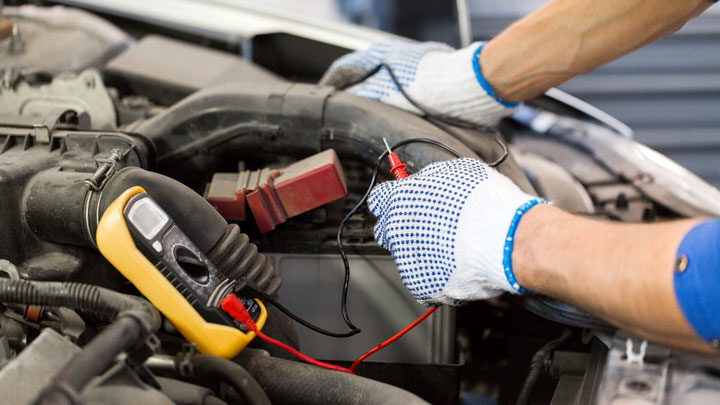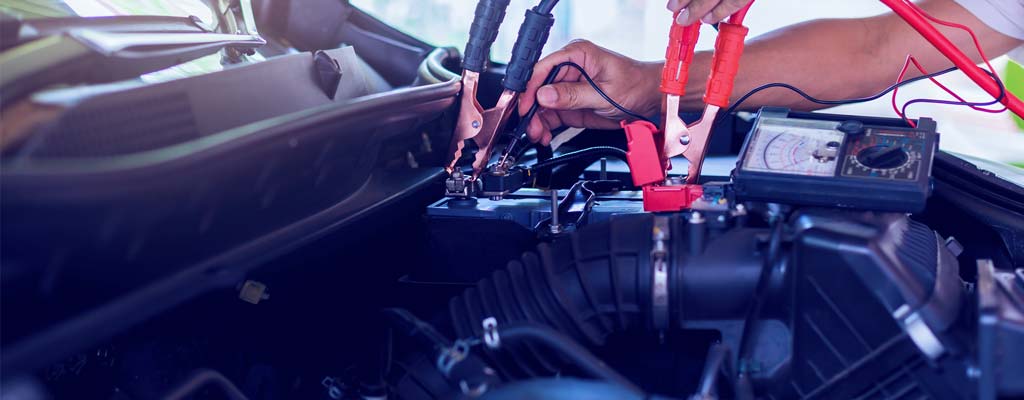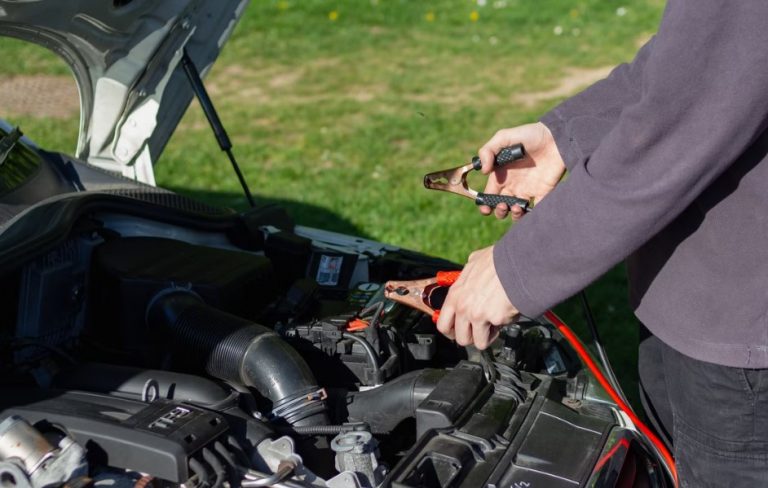Brand New Car Battery Keeps Dying: Unraveling the Mystery Behind Persistent Power Loss
Brand New Car Battery Keeps Dying: Unraveling the Mystery Behind Persistent Power Loss cars.truckstrend.com
There’s little more frustrating for a car owner than installing a brand new battery, only to find their vehicle struggling to start, or completely dead, just days or weeks later. The assumption is often that a new battery signifies a fresh start, reliable power, and peace of mind. So, when a "brand new car battery keeps dying," it’s not just an inconvenience; it’s a perplexing paradox that hints at deeper, underlying issues within your vehicle’s electrical system. This comprehensive guide will delve into the root causes, diagnostic steps, and actionable solutions to help you get to the bottom of this bewildering problem and restore your vehicle’s dependable power.
The Initial Shock: Why a New Battery Fails
Brand New Car Battery Keeps Dying: Unraveling the Mystery Behind Persistent Power Loss
When you purchase a new car battery, you expect it to perform flawlessly for years, not days. This expectation is rooted in the fact that batteries are designed to be consumables with a defined lifespan. Therefore, a premature failure of a new battery almost always points to an external factor. The battery itself, in most cases, is merely the victim – a symptom of an imbalance or malfunction elsewhere in your vehicle’s complex electrical ecosystem. Understanding this fundamental concept is the first step toward effective diagnosis and resolution.
Common Culprits Behind a Dying New Battery
Identifying why a new battery isn’t holding a charge requires a systematic approach, as several interconnected components could be at fault. Here are the most common reasons:
1. The Insidious Parasitic Drain
Perhaps the most common and challenging culprit is a "parasitic drain." This occurs when components in your vehicle continue to draw power even when the ignition is off and the car is supposedly "asleep." While a small, normal parasitic draw is expected (for things like the clock, radio presets, or alarm system), an excessive drain can deplete a new battery overnight or within a few days.
- Examples of Excessive Drains:
- Faulty Modules: A malfunctioning body control module (BCM), infotainment system, or other electronic control unit (ECU) that doesn’t properly "sleep."
- Stuck Relays: A relay that remains energized, continuously powering a circuit.
- Aftermarket Accessories: Improperly wired alarm systems, remote starters, stereos, or GPS trackers that draw constant power.
- Interior Lights: A glove box light, trunk light, or vanity mirror light left on due to a faulty switch or latch.
- Corroded Wiring: Old or damaged wiring that creates an unintended path to ground.
- Short Circuits: Although less common for constant drain, a minor short can slowly drain power.


2. The Failing Charging System
Even the best battery won’t last if it’s not being properly recharged while the engine is running. The charging system is primarily responsible for replenishing the battery’s charge and supplying power to the vehicle’s electrical components when the engine is on.

- Alternator Failure: A common issue where the alternator is not producing sufficient voltage or current to recharge the battery. This can be due to worn brushes, a faulty rectifier, or a failing voltage regulator.
- Loose or Corroded Connections: Dirty, loose, or corroded battery terminals, ground cables, or alternator connections can impede the flow of electricity, preventing the battery from receiving a full charge.
- Faulty Voltage Regulator: Often integrated into the alternator, the voltage regulator controls the output voltage to prevent overcharging or undercharging. A faulty one can lead to either scenario, both detrimental to battery life.
- Worn Serpentine Belt: If the serpentine belt (which drives the alternator) is loose, worn, or damaged, the alternator won’t spin at the correct speed, leading to insufficient power generation.
3. Battery Defects (Rare but Possible)
While less common, even a new battery can be defective. This is usually due to a manufacturing flaw or improper handling/storage before purchase.
- Manufacturing Defects: An internal short circuit in a cell, poor plate construction, or issues with electrolyte composition can cause a battery to fail prematurely.
- Improper Storage: Batteries stored on concrete floors for extended periods, or left discharged, can sulfate and lose capacity even before being installed.
- Incorrect Battery Type/Size: Using a battery with insufficient Cold Cranking Amps (CCA) or Reserve Capacity (RC) for your vehicle’s requirements can lead to it being constantly over-stressed and prematurely failing.
4. Driver Habits and Environmental Factors
Sometimes, the problem isn’t a fault with the car but how it’s used or the environment it operates in.
- Short Trips: If your typical driving involves only very short trips, the alternator may not have enough time to fully recharge the battery after starting the engine, leading to a gradual discharge over time.
- Extreme Temperatures: Both extreme cold and extreme heat can reduce a battery’s efficiency and lifespan. Cold temperatures reduce chemical reactions, while heat accelerates internal corrosion.
- Leaving Accessories On: Accidental oversight like leaving headlights on, a door ajar (which keeps interior lights on), or charging devices without the engine running can drain a battery quickly.
Diagnosing the Problem: A Step-by-Step Guide
Pinpointing the exact cause requires systematic testing. While some steps require specialized tools, many can be done with a basic multimeter.
-
Visual Inspection:
- Check battery terminals for corrosion, looseness, or damage. Clean any corrosion thoroughly.
- Inspect battery cables for fraying, cracks, or damage, especially where they connect to the battery, engine block, and alternator.
- Ensure the battery hold-down clamp is secure.
- Look for any signs of physical damage to the battery case itself (bulging, cracks, leaks).
-
Battery Load Test:
- Even if new, confirm the battery’s health. Most auto parts stores offer free battery load testing. A load test simulates starting the car and checks if the battery can maintain sufficient voltage under a heavy draw.
- If the battery fails this test, and it’s truly new, it might be defective and warrant a warranty claim.
-
Charging System Test:
- Voltage Test (Engine Off): With the engine off, measure the battery’s voltage. A fully charged battery should read 12.6-12.8 volts. Anything significantly lower suggests a drain or a failing battery.
- Voltage Test (Engine On): Start the engine. At idle, the voltage across the battery terminals should be between 13.8 and 14.7 volts. If it’s below 13.8V, the alternator isn’t charging adequately. If it’s above 15V, the voltage regulator might be overcharging, which is also detrimental.
- Load Test (Engine On): Turn on headlights, HVAC fan on high, and other accessories. The voltage should remain within the 13.8V-14.7V range. A significant drop indicates a struggling alternator.
-
Parasitic Drain Test (Requires a Multimeter):
- Preparation: Ensure all doors are closed, lights off, keys out of the ignition, and the car has been "asleep" for at least 15-30 minutes (some modern cars take time to shut down all modules).
- Connect Multimeter: Disconnect the negative battery cable. Set your multimeter to measure Amps (A) in a high range (e.g., 10A or 20A). Connect the multimeter leads in series between the negative battery post and the disconnected negative battery cable.
- Read the Draw: Note the initial reading. It might be high initially as modules wake up, then it should drop. After the "sleep" period, a normal parasitic draw is typically between 20-50 milliamps (0.02-0.05 amps). Anything significantly higher (e.g., 0.1A or more) indicates an excessive drain.
- Isolate the Drain: Once you’ve confirmed an excessive drain, start pulling fuses one by one from the fuse box (both under the hood and inside the cabin), observing the multimeter. When the amperage drops significantly after pulling a specific fuse, you’ve identified the circuit where the drain is located. This narrows down the problem area.
-
Professional Diagnosis:
- If you’re uncomfortable performing these tests, or if you’ve exhausted your diagnostic capabilities, it’s time to consult a qualified mechanic. Modern vehicles have complex electrical systems, and specialized diagnostic tools (like scan tools that can read module sleep statuses) may be required.
Solutions and Preventative Measures
Once the problem is identified, implementing the correct solution is key:
- Fixing Parasitic Drains: Repair or replace the faulty component on the identified circuit. This could involve fixing a sticky relay, replacing a faulty interior light switch, or rewiring an aftermarket accessory.
- Repairing/Replacing Charging System Components: If the alternator or voltage regulator is faulty, they will need to be replaced. Clean or replace corroded battery terminals and cables. Ensure the serpentine belt is in good condition and properly tensioned.
- Battery Replacement (If Truly Defective): If your new battery failed a load test and was confirmed to be defective, initiate a warranty claim with the retailer or manufacturer.
- Good Battery Maintenance Habits:
- Keep battery terminals clean and free of corrosion. Use anti-corrosion spray.
- Ensure the battery is securely mounted to prevent vibration damage.
- For vehicles stored for extended periods or those driven only on short trips, consider using a trickle charger or battery maintainer to keep the battery topped up.
- Be mindful of leaving lights or accessories on when the engine is off.
- If possible, drive for at least 20-30 minutes after starting to allow the alternator to fully recharge the battery.
Important Considerations and Potential Challenges
- Complexity of Modern Vehicle Electronics: Today’s cars are essentially computers on wheels. Diagnosing electrical issues can be intricate, requiring specific knowledge of wiring diagrams and module communication.
- Cost of Diagnosis and Repair: While DIY diagnosis can save money, professional repair costs can vary significantly depending on the issue. An alternator replacement can be hundreds of dollars, while tracking down a complex parasitic drain can involve several hours of labor.
- Safety Precautions: Always disconnect the negative battery terminal before working on electrical components. Wear appropriate safety gear (gloves, eye protection). Be aware of the risks of sparks and battery acid.
- Warranty Claims: Keep your battery purchase receipt. Most new batteries come with a warranty (e.g., 2-5 years). If it’s truly defective, the warranty should cover replacement.
Estimated Costs for Diagnosis and Potential Repairs
Please note that these are approximate costs and can vary widely based on vehicle make/model, location, and mechanic’s rates.
| Item/Service | Estimated Cost Range (USD) | Description |
|---|---|---|
| DIY Diagnostic Tools | ||
| Multimeter (Basic) | $15 – $50 | Essential for voltage and amperage tests. |
| Battery Terminal Cleaner Brush | $5 – $10 | For cleaning corrosion. |
| Battery Load Tester (Handheld) | $50 – $150 | More accurate than just a voltmeter for checking battery health. |
| Trickle Charger/Battery Maintainer | $30 – $100 | For maintaining battery charge during storage or for short-trip drivers. |
| Professional Diagnostic Services | ||
| Battery & Charging System Test | $0 – $50 | Many auto parts stores offer free, some mechanics charge a small fee. |
| Parasitic Drain Diagnosis (Labor) | $100 – $300+ | Can take 1-3+ hours of labor depending on complexity. |
| Common Repair Parts (Excluding Labor) | ||
| Alternator (Remanufactured) | $150 – $400 | Cost of the part only. |
| Alternator (New) | $250 – $600+ | Cost of the part only. |
| Battery Cables (Main) | $50 – $150 | Depending on length and gauge. |
| Battery Terminals | $10 – $30 | Replacement terminals. |
| Relays (Individual) | $15 – $50 | For specific faulty relays. |
| Interior Light Switches/Sensors | $20 – $100 | Depending on the specific component. |
| Aftermarket Accessory Rewiring/Removal | $50 – $200+ | Labor for identifying and correcting wiring issues. |
| Labor for Repairs (Per Hour) | $80 – $150+ | Varies significantly by region and shop. |
Frequently Asked Questions (FAQ)
Q1: Is it always the battery’s fault if it’s new and keeps dying?
A1: No, almost never. While a new battery can rarely be defective, the vast majority of cases where a new battery keeps dying point to an underlying issue with the vehicle’s charging system or an excessive parasitic drain.
Q2: How long should a new car battery typically last?
A2: A new car battery, under normal operating conditions and proper maintenance, should last anywhere from 3 to 5 years, and sometimes even longer (up to 7 years in ideal climates with good care).
Q3: Can a bad alternator kill a new battery?
A3: Absolutely. If the alternator isn’t charging the battery sufficiently, the battery will gradually discharge and eventually die. Repeated deep discharges caused by a faulty alternator can severely shorten a new battery’s lifespan.
Q4: What’s a parasitic drain and how do I find it?
A4: A parasitic drain is an electrical current draw that continues even when the vehicle is turned off. It’s usually caused by a faulty component or improperly wired accessory. You can find it by using a multimeter in series with your battery’s negative terminal and then systematically pulling fuses to isolate the circuit drawing excessive power.
Q5: When should I get professional help for a dying new battery?
A5: If you’ve performed basic checks (visual inspection, battery/charging system tests) and can’t identify the source of the problem, or if you’re uncomfortable working with vehicle electrical systems, it’s best to seek professional help. Modern cars can have complex electrical issues that require specialized diagnostic tools.
Q6: Can short trips damage a new battery?
A6: Yes, consistently taking very short trips (e.g., less than 15-20 minutes) can prevent the alternator from fully recharging the battery after each start. Over time, this leads to a chronically undercharged battery, which can reduce its lifespan and eventually cause it to die prematurely.
Conclusion
A brand new car battery that keeps dying is a clear signal that something is amiss beyond the battery itself. While deeply frustrating, it presents an opportunity to diagnose and rectify an underlying issue in your vehicle’s electrical system. By systematically investigating potential parasitic drains, evaluating the charging system, and considering environmental factors and driving habits, you can pinpoint the root cause. With the right diagnostic approach and a commitment to proper vehicle maintenance, you can ensure your car’s electrical system functions as intended, providing reliable power and putting an end to the baffling mystery of the dying new battery.






